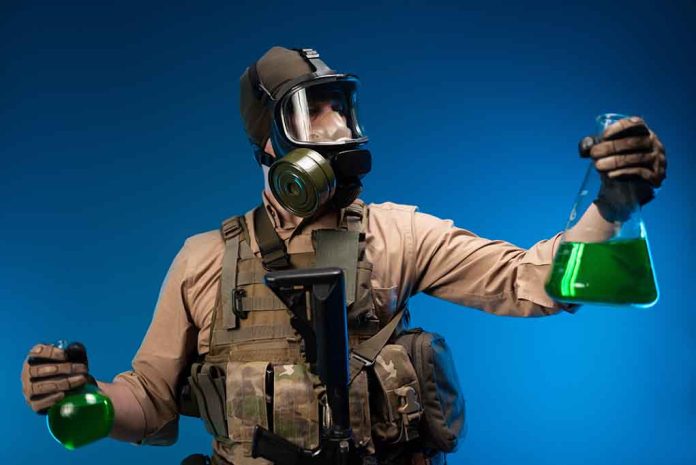
Apparently we’re in for another round of “Guess What China’s Up To Now?” Today’s episode: pharmacological warfare. Just when you thought your biggest worry was whether your neighbor’s kid would egg your house on Halloween, here comes the threat of bioengineered substances potentially wreaking havoc on a global scale. Buckle up, patriots, because we’re diving into a world where the next big threat might be smaller than a grain of sand but pack a punch that could make a nuclear warhead blush.
The Pentagon’s Wake-Up Call
The Department of Defense (DOD) has finally decided to take a serious look at the biodefense landscape, releasing its first Biodefense Posture Review (BPR) in 2023. It’s about time, considering the world we’re living in post-Covid.
This review isn’t just rehashing old threats; it’s opening our eyes to a whole new world of potential dangers, including those that could arise accidentally or naturally. The DOD is finally catching up to what many of us have been worried about for years: the threat isn’t just from terrorists anymore.
China’s Biotech Boom: Friend or Foe?
While the U.S. has been busy debating whether to put pineapple on pizza, China has been quietly becoming a powerhouse in pharmaceutical R&D. Their response to the 2014 Ebola outbreak was a wake-up call for the global community.
China managed to develop an Ebola vaccine in just 26 months, pouring millions into research. While this might sound like good news for global health, it also raises some eyebrows about their capabilities in less benevolent areas of biotech.
The AI Wild Card
As if biological threats weren’t scary enough, throw artificial intelligence into the mix, and you’ve got a recipe for a sci-fi nightmare come to life. The BPR doesn’t mince words about this:
This isn’t just about creating new medicines faster; it’s about the potential for AI to supercharge the development of biological agents that could be used for less-than-friendly purposes. Imagine a computer designing a virus that could target specific genetic traits. It’s not just science fiction anymore, folks.
Global Response and U.S. Preparedness
The DOD isn’t just sitting on its hands. The BPR outlines six goals, including assessing threats through 2035 and integrating biodefense into military training and doctrine. They’re also setting up a new Biodefense Council to coordinate efforts, which is a fancy way of saying they’re trying to get their act together.
But here’s the kicker: the Biological Weapons and Toxins Convention (BWC) lacks teeth. There’s no real way to verify if countries are complying, and let’s face it, some nations aren’t exactly known for their honesty.
The U.S. is also looking to diversify its biodefense supply chain. After all, relying on potential adversaries for crucial medical supplies isn’t exactly a winning strategy.
Ladies and gentlemen, we’re entering a new era of warfare where the weapons might be invisible, but the threats are all too real. It’s time for America to step up its game in biodefense, or we might find ourselves outmaneuvered in ways we can’t even imagine. Stay vigilant, stay informed, and for heaven’s sake, wash your hands. You never know what might be lurking out there.







